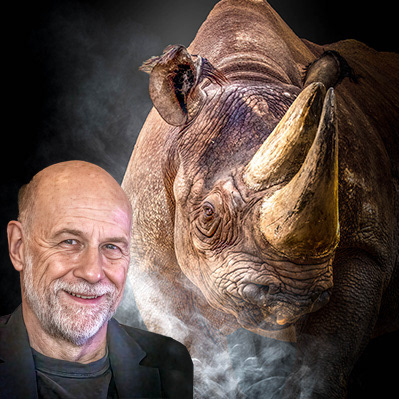Animal Photographer Ralph Lear Goes Stalking in Frankfurt Zoo
Frankfurt - Zebra mares have a mind of their own. At least the four mares who call Frankfurt Zoo home. Animal photographer Ralph Lear, who lives in Bornheim, knows this from his own experience. He says he's been trying to get the quartet's attention for three years. So far, in vain: "They only react to their keepers." The 62-year-old has come up with a few ideas to attract the attention of the black-and-white hoofed animals. Once, he even put on an olive green T-shirt and matching shorts, just like the keepers, to outsmart the animals. It was useless - even in this outfit, the zebras gave him the cold shoulder. "The hand that offers the apple or the carrot is simply unbeatable," he says, laughing.
Nevertheless, he has managed to capture several magnificent shots of the four headstrong mares, as well as numerous other zoo inhabitants. For example, Spectacled Bear Suyana, who looks majestically around from a thick branch. Or an impressive frontal view of the rhino bull Kalusho, who holds his head slightly lowered, allowing his powerful horn to be highlighted. The animals in Ralph Lear's pictures exude a special dignity. Even a usually cute-looking meerkat gets to present itself from a different side: with a wide-open mouth revealing several sharp, pointed teeth.
He wants to show the beauty of animals with his photos, says the 62-year-old, who comes from the USA and arrived in the Rhine-Main region almost 40 years ago during his time in the army. Sometimes he features a powerhouse like Kalusho, sometimes a pelican showcasing its enormous beak. Snapshots, like most other zoo visitors take with their cell phones, don't interest him. "They don't see anything of the animal's characteristics." He, on the other hand, often takes a long time, observes, waits for the right lighting conditions, the perfect background, but also for a special posture or a particular turn of the head. He wants to take pictures that not everyone has, he says.
That's not always easy with some zoo inhabitants. Flamingos, for instance, often seem a bit boring, he finds. Cute photos of them standing on one leg are plentiful. Ralph Lear, however, caught an individual intently preening its feathers while inspecting its surroundings with a watchful gaze. It's a picture that has nothing lovely about it and fascinates precisely because of that. Giraffes are also difficult to photograph, he explains. Not only because of their size but also because of the ropes surrounding their enclosure. Sometimes he's even had to lie on the ground to photograph underneath the distracting barriers. He also places great importance on post-processing. He often darkens the background or redesigns it so that no distracting details take away from the animals.
He has dedicated himself to photography for three years – since he took early retirement after 35 years of working in IT. He started photography in his youth but then, after getting married and starting a family, didn't pick up a camera for decades. He finally rediscovered his passion for animal photography at a workshop. Since then, he goes to the Frankfurt Zoo one to three times a week, often with the photo group "Frankfurt Outdoor Photographers," which he has joined. He often takes 100 to 300 pictures during his visits – "but I throw away at least 80 percent of them." Many zoo employees now know him, as do several animals. Rhino bull Kalusho, for example, reacts when he calls him, he says, as do hippo Petra and spectacled bear Manu.
A while ago, he and other members of the photo group even made a special discovery with the penguins: The quick divers love to play passionately. Now, when Ralph Lear has the sun at his back, he raises his hand so its shadow falls into the pool and runs back and forth. Usually, 20 penguins then dart over to chase the dark spot, he says, laughing: "The keepers didn't even know they liked that." Not all zoo inhabitants are as particular as the zebra mares.
